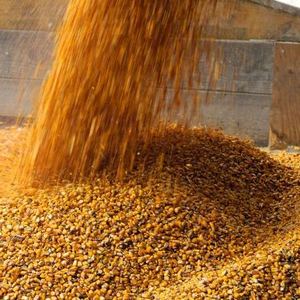Commodities: China's DDGS rules still evolving

July 28, 2014
BY Sean Broderick, CHS
In a parallel to last month, China again has created new rules with regard to shipments and this time there are not a lot of realistic ways to work within the regulatory framework. At the moment, their rules state that all shipments must be accompanied by a government-stamped document stating the absence of MIR 162 corn, or Syngenta’s Agrisure Viptera variety, in that lot. However, there are not any government agencies which can officially test for this. So until that happens, it looks as though Chinese exports will be substantially slowed.
This has left traders scrambling to find alternative destinations for the product they have bought, both domestically and abroad. In a market that was already flush with trucks due to the lack of railcar movement, this has weighed heavily on prices. The market has dropped $50 to $60 per ton in the last month, and is now below 100 percent the value of local corn. There had been a pretty good book of sales by plants through September, but not as much on for the fourth quarter. Now, with this Chinese situation happening, with the sheer volume of sales left to made, and in a timeframe that anticipates a huge corn crop, the market is going to feel additional downward pressure. We have seen reports of the Chinese corn reserves being even larger than originally anticipated, so do not anticipate a quick resolution to their additional regulatory demands.
In the end, most of the additional sales will need to move domestically, or via containers to other countries. Prices are already at levels that are increasing inclusion rates in diets for both hogs and poultry, but there is still room for more of that to happen.
Advertisement
Looking ahead, domestic logistics will take main stage. Rail looks to be in a never-ending quagmire, and winter is not far away. Trucks and truckers will be extremely difficult to find during harvest, and barge freight has had a pretty good pre-harvest run up. It is going to feel like making sausage: squeezing a lot through a small space.
DDGS pricing: Sept. 2014 Aug. 2014 Sept. 2013
Minnesota 95 160 225
Chicago 105 185 255
Advertisement
Buffalo 130 180 255
California 163 217 287
Florida 140 190 275
Related Stories
Legislation introduced in the California Senate on June 23 aims to cap the price of Low Carbon Fuel Standard credits as part of a larger effort to overhaul the state’s fuel regulations and mitigate rising gas prices.
The government of Brazil on June 25 announced it will increase the mandatory blend of ethanol in gasoline from 27% to 30% and the mandatory blend of biodiesel in diesel from 14% to 15%, effective Aug. 1.
The U.S. EIA reduced its 2025 and 2026 production forecasts for a category of biofuels that includes SAF in its latest Short-Term Energy Outlook, released June 10. The forecast for 2025 renewable diesel production was also revised down.
The U.S. exported 21,545.9 metric tons of biodiesel and biodiesel blends of B30 and greater in April, according to data released by the USDA Foreign Agricultural Service on June 4. U.S. imports of biodiesel were at 4,417.3 metric tons for the month.
The Iowa Biodiesel Board and Iowa Soybean Association joined Pilot Travel Centers, PepsiCo and Optimus Technologies to celebrate the launch of a new B99 biodiesel pump for fleets at Pilot’s Des Moines travel center.
Upcoming Events










